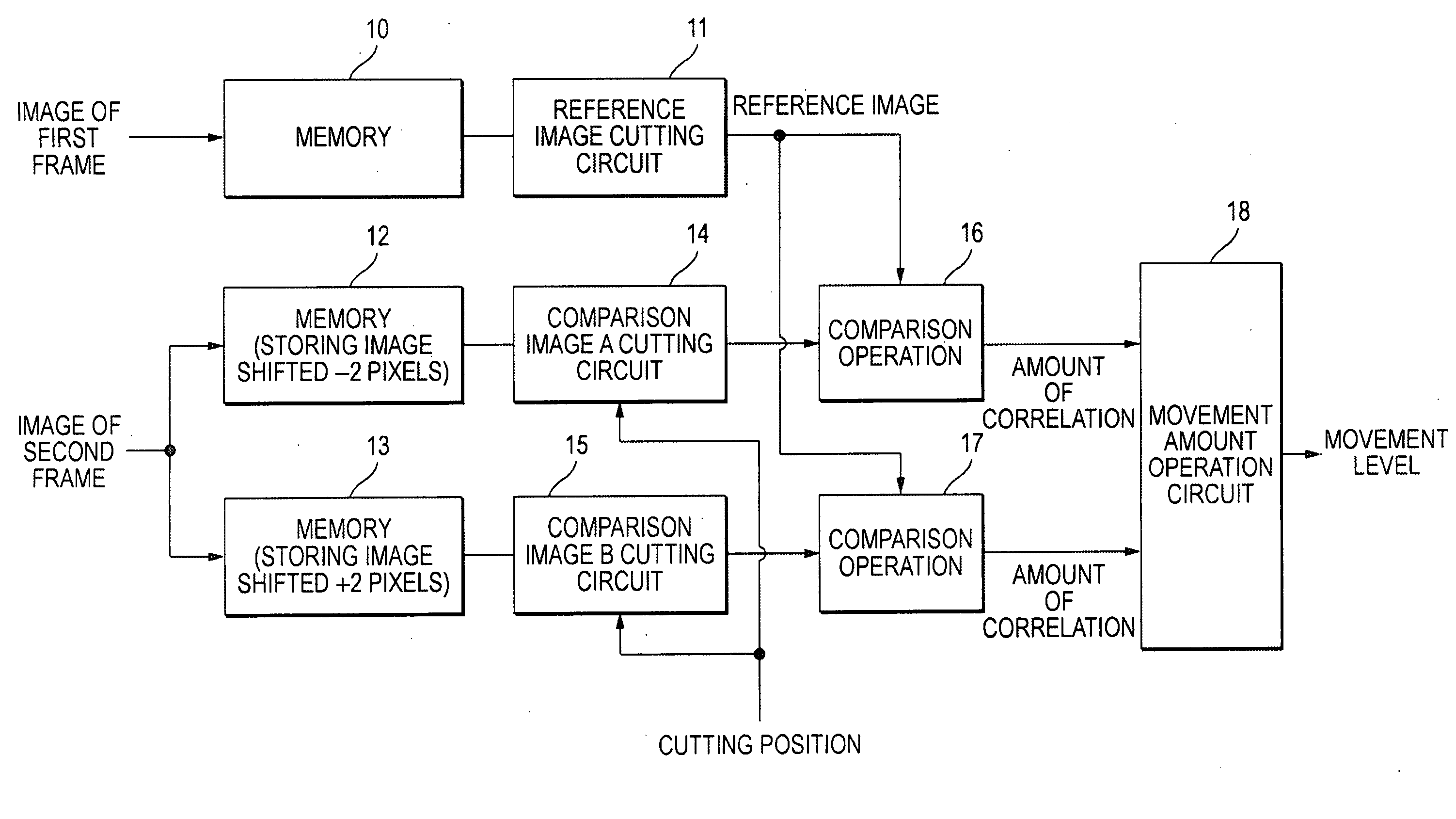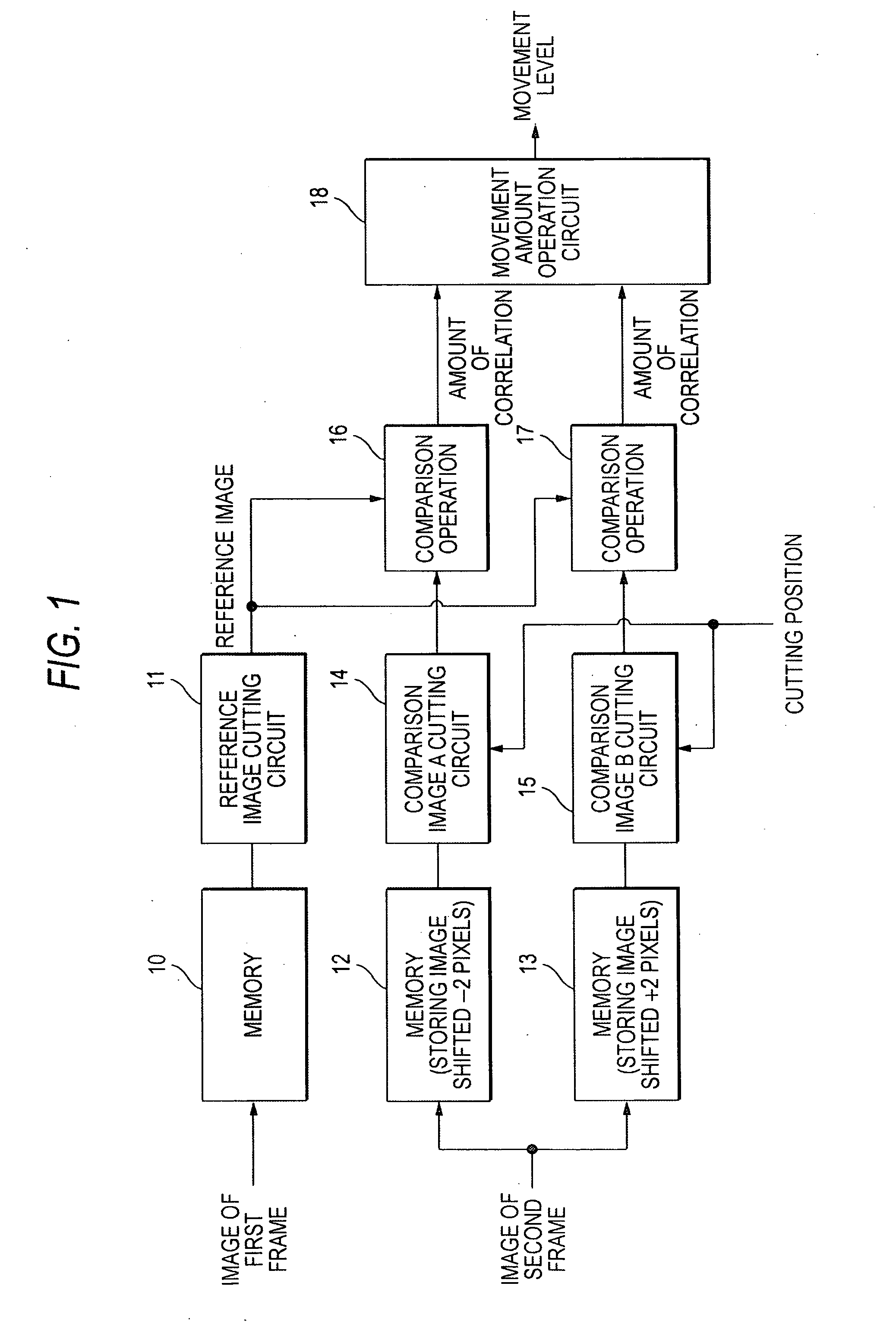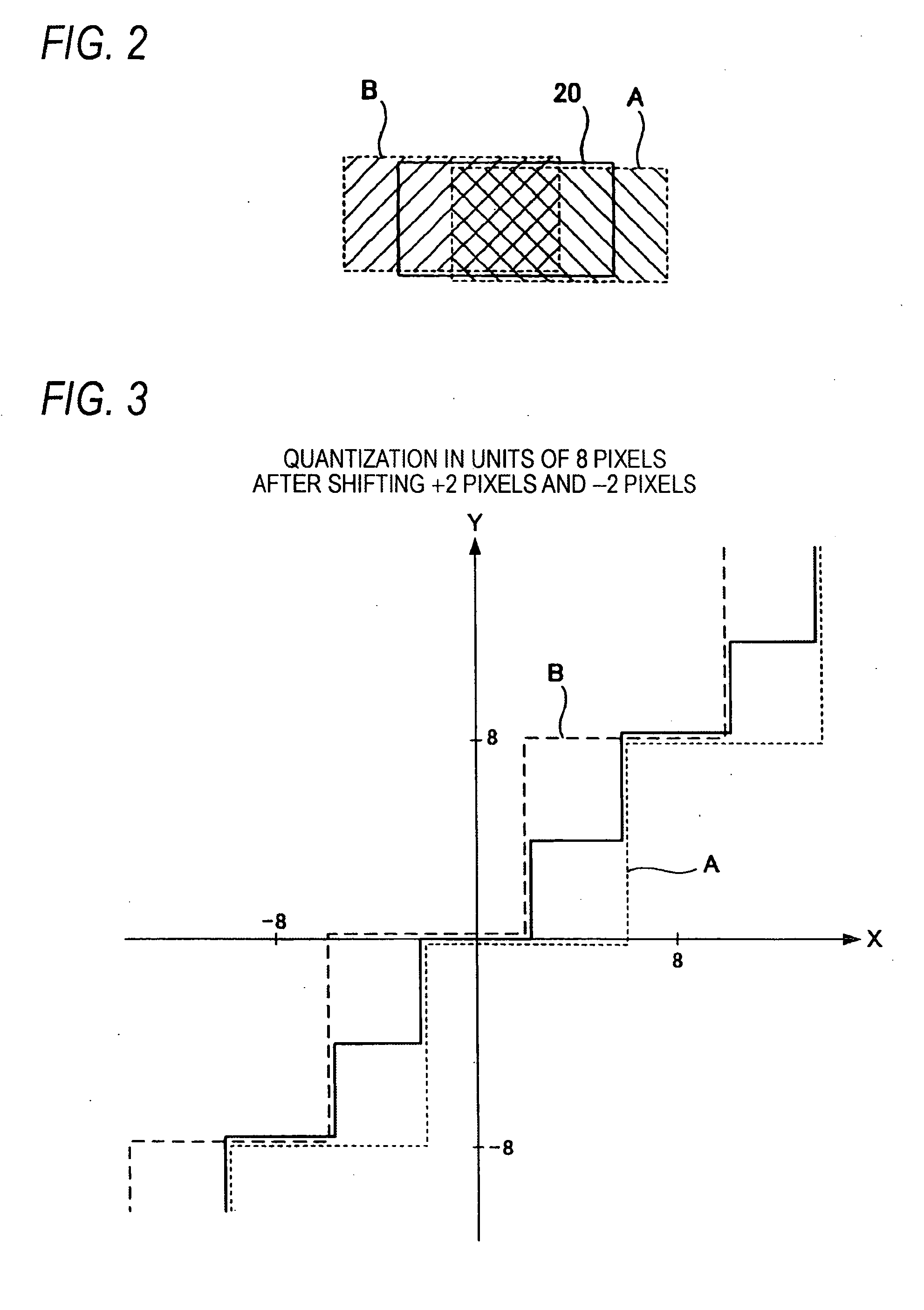Method and device for calculating motion vector between two images and program of calculating motion vector between two images
- Summary
- Abstract
- Description
- Claims
- Application Information
AI Technical Summary
Benefits of technology
Problems solved by technology
Method used
Image
Examples
first embodiment
[0068]FIG. 1 is a view illustrating the configuration of an apparatus for calculating a motion vector between two images according to the first embodiment of the invention. A shift unit of a block from which a comparison image is cut out is n-th power of 2 (n is desired number). For the purpose of clear explanation, it is assumed that the shift unit is eight pixels in the following description.
[0069] Referring to FIG. 1, a motion vector calculating apparatus according to the first embodiment includes a memory 10 that receives and stores an image of a first frame, a reference image cutting circuit 11 that cuts out a reference image located at a predetermined address from the data stored in the memory 10, a memory 12 that receives an image of a second frame to be compared with the first frame and stores the image of the second frame with shifting the image of the second frame −2 pixels, and a memory 13 that receives the image of the second frame and stores the image of the second fra...
second embodiment
[0078]FIG. 4 is a view illustrating the configuration of an apparatus for calculating a motion vector between two images according to a second embodiment of the invention. Prior to describing the second embodiment shown in FIG. 4, a principle of calculating a motion vector according to the second embodiment will be explained with reference to FIGS. 5 to 8.
[0079] In the first embodiment, a big block is set on the first frame and the comparison operation between the reference image within the set block and the comparison image within a block of the second from is performed to obtain the motion vector. However, in the case where a part of an image within a block moves significantly, for example, if a motion picture in which an animal runs has been captured, camera shake of the entire image and movement of the animal captured in a part of the image cannot be distinguished. Accordingly, since the movement of the animal may increase a calculation error of a camera shake motion vector of ...
third embodiment
[0113]FIG. 10 is a flow chart illustrating a processing sequence of a program of calculating a motion vector between two images according to a third embodiment of the invention. Video data, which is stored in a recording medium after capturing of motion pictures with a digital camera or the like, is input to a personal computer or the like. The program of calculating a motion vector between two images is then executed by an operation processing unit of the computer. Thus, video data from which camera shake is eliminated is created.
[0114] The program of calculating a motion vector between two images according to the third embodiment causes a computer to execute the same process as that in the first embodiment described above. Specifically, the program of calculating a motion vector between two images according to the third embodiment acquires first image data from the video data, which has transferred from the recording medium to a hard (step S1). Then, the program acquires second i...
PUM
 Login to View More
Login to View More Abstract
Description
Claims
Application Information
 Login to View More
Login to View More - R&D
- Intellectual Property
- Life Sciences
- Materials
- Tech Scout
- Unparalleled Data Quality
- Higher Quality Content
- 60% Fewer Hallucinations
Browse by: Latest US Patents, China's latest patents, Technical Efficacy Thesaurus, Application Domain, Technology Topic, Popular Technical Reports.
© 2025 PatSnap. All rights reserved.Legal|Privacy policy|Modern Slavery Act Transparency Statement|Sitemap|About US| Contact US: help@patsnap.com



